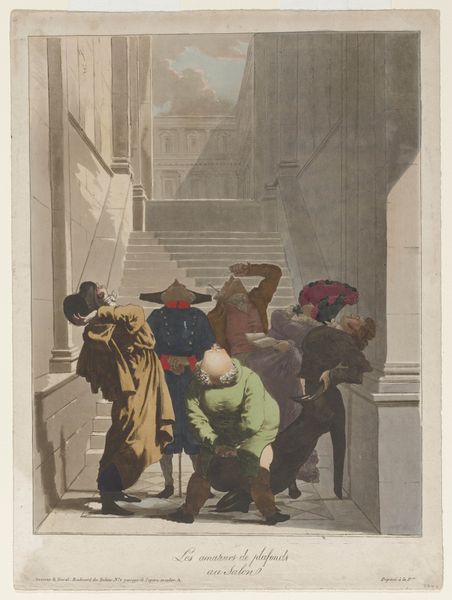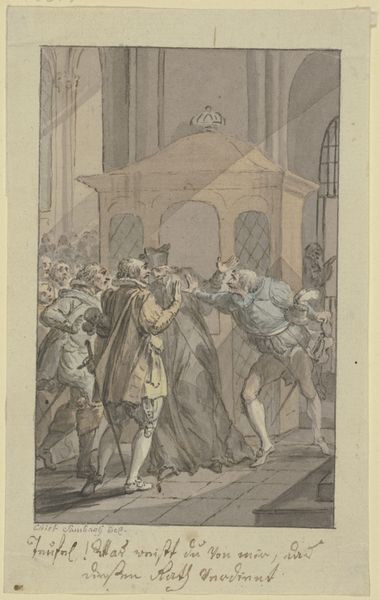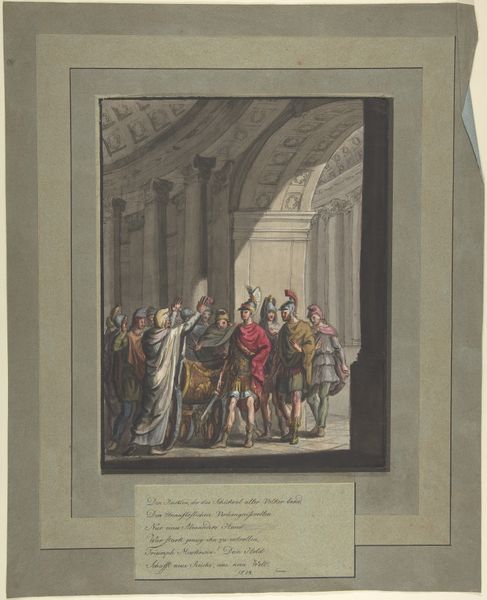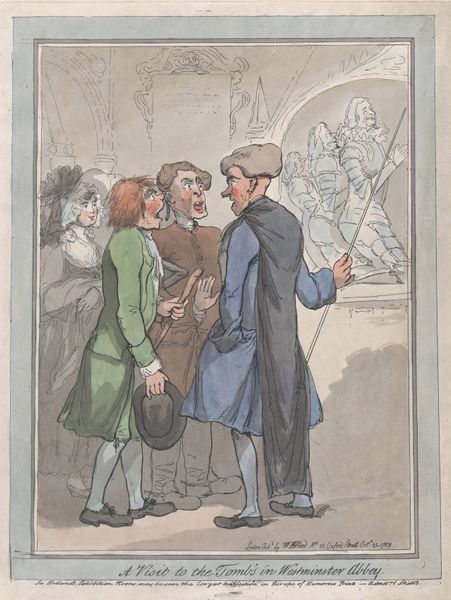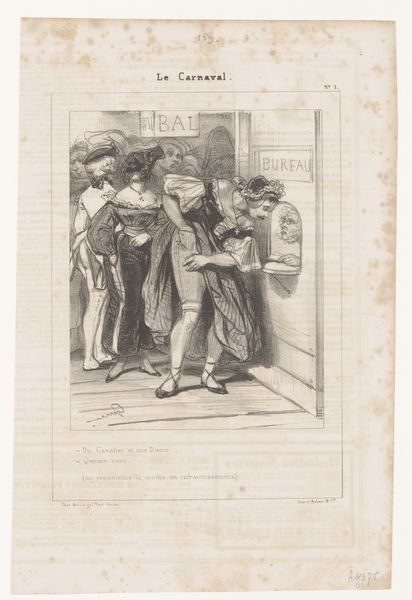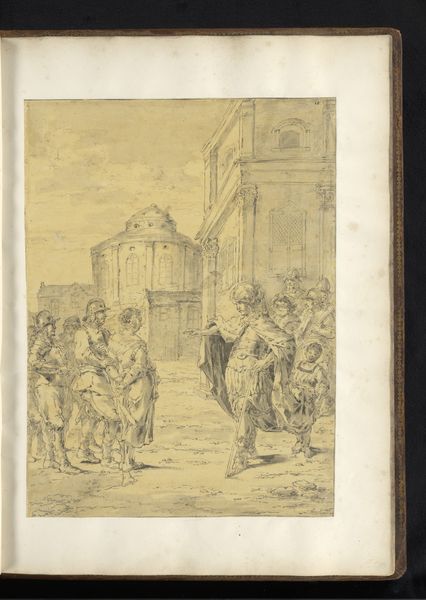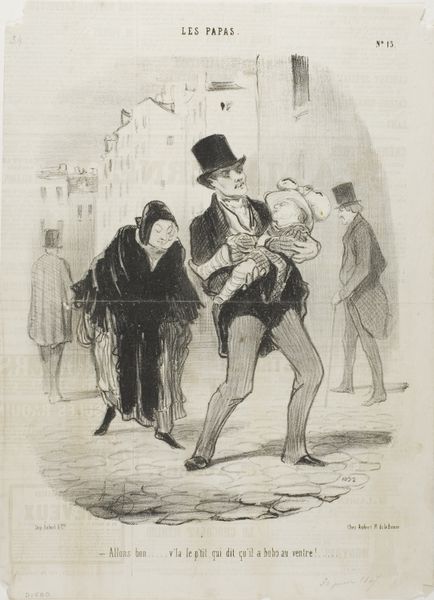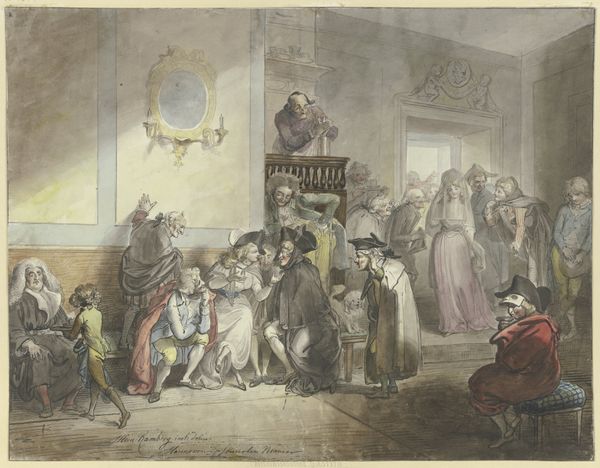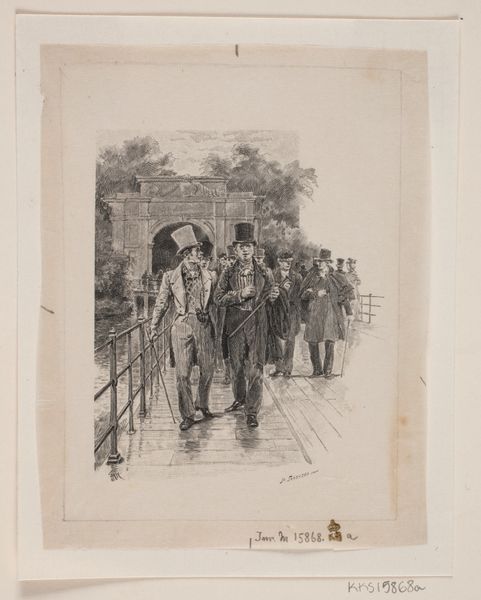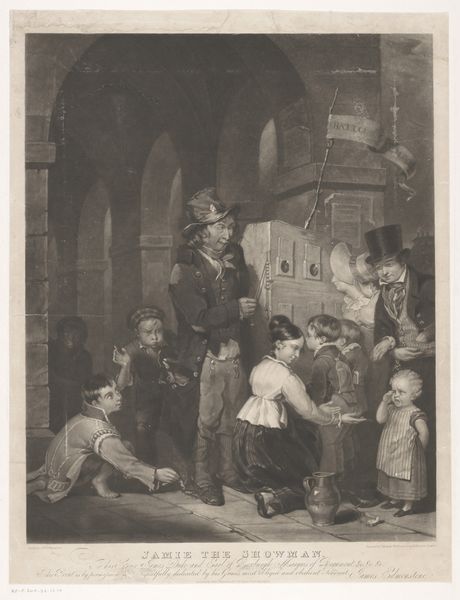
Visitors to the Salon Exhibition, Admiring the Ceiling (Les Amateurs de plafonds au Salon) 1824
0:00
0:00
drawing, coloured-pencil, print
#
portrait
#
drawing
#
coloured-pencil
# print
#
figuration
#
coloured pencil
#
romanticism
#
men
#
genre-painting
#
watercolor
Dimensions: sheet: 15 9/16 x 11 1/4 in. (39.5 x 28.6 cm)
Copyright: Public Domain
Curator: What strikes me most about this piece, "Visitors to the Salon Exhibition, Admiring the Ceiling" by Louis Philibert Debucourt, made around 1824, is how perfectly it captures the human desire for artistic transcendence, albeit with a humorous twist. Editor: It’s oddly unsettling, isn’t it? This cluster of figures straining their necks, their expressions hidden, it feels like a commentary on collective spectacle, or perhaps a kind of blind faith in the institution of art. Curator: The Romantic era loved grandiosity, both in theme and scale. We see this push for elevated emotion mirrored here with the figures quite literally aspiring toward something above them, in this case embodied in the salon ceiling. Notice how the rigid architecture pushes your eye upward along with their gazes. The print is rendered with colored pencil and watercolor giving it a hazy soft appearance, further enhancing the idea of ephemeral aspiration. Editor: It's interesting how Debucourt chose to depict the audience, rather than the art itself. This focuses our attention on the act of viewing and what that says about cultural power dynamics, specifically who has access to art, and how that act might unite or alienate. It's clear not everyone is engaging with the artwork in the same way, or from the same position, even if they're all physically in the same place. Curator: Indeed. There's also a shared symbolism of striving for higher knowledge or enlightenment. Art, for many in the Romantic period, offered a glimpse into something greater than themselves, perhaps the divine or a sublime natural force. This simple scene embodies that symbolic journey, reminding us that even everyday life contains a quest for deeper meaning. Editor: Looking at their rigid postures, their closed-off attitudes, the people depicted here seem removed, caught in their separate bubbles. It reminds me of how much social standing defined those exhibition spaces. They reflect the complexities of access and who is actually given entry into this cultural landscape. Their rigid stance is probably dictated more by strict social rules than the artwork displayed above. Curator: You're absolutely right, it does reveal layers of social critique interwoven with sincere admiration, it holds together both worlds seamlessly. The appeal of the Salon itself became a symbol, transcending the actual art. Editor: In a way, "Visitors to the Salon Exhibition" serves as a constant mirror reflecting shifting social landscapes as we continue navigating art, culture, and its connection to class dynamics today.
Comments
No comments
Be the first to comment and join the conversation on the ultimate creative platform.

